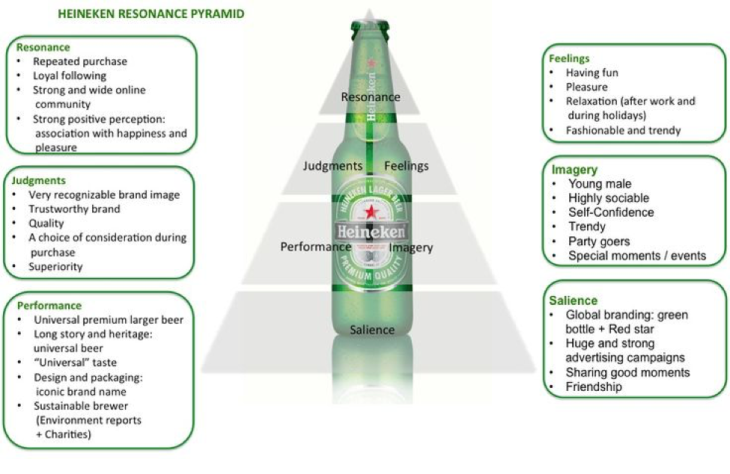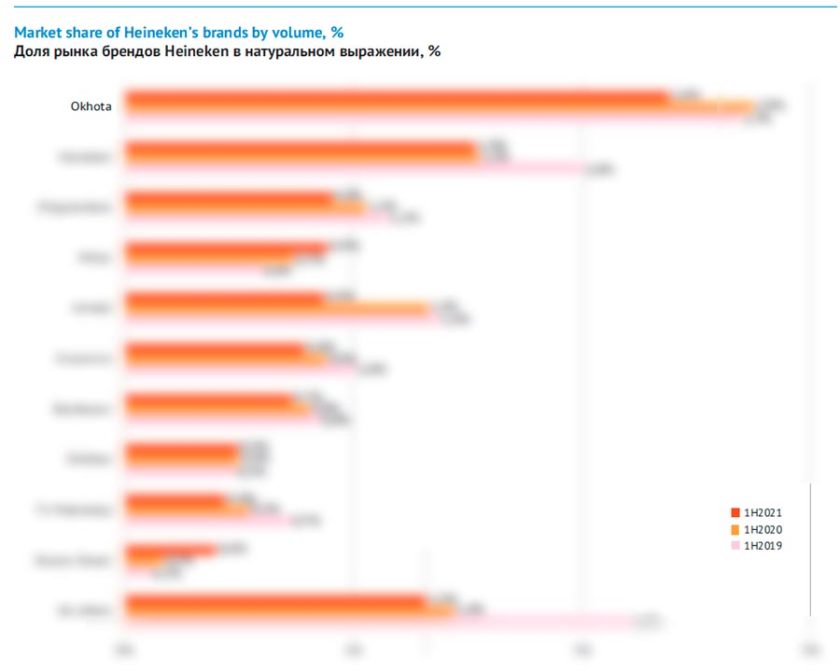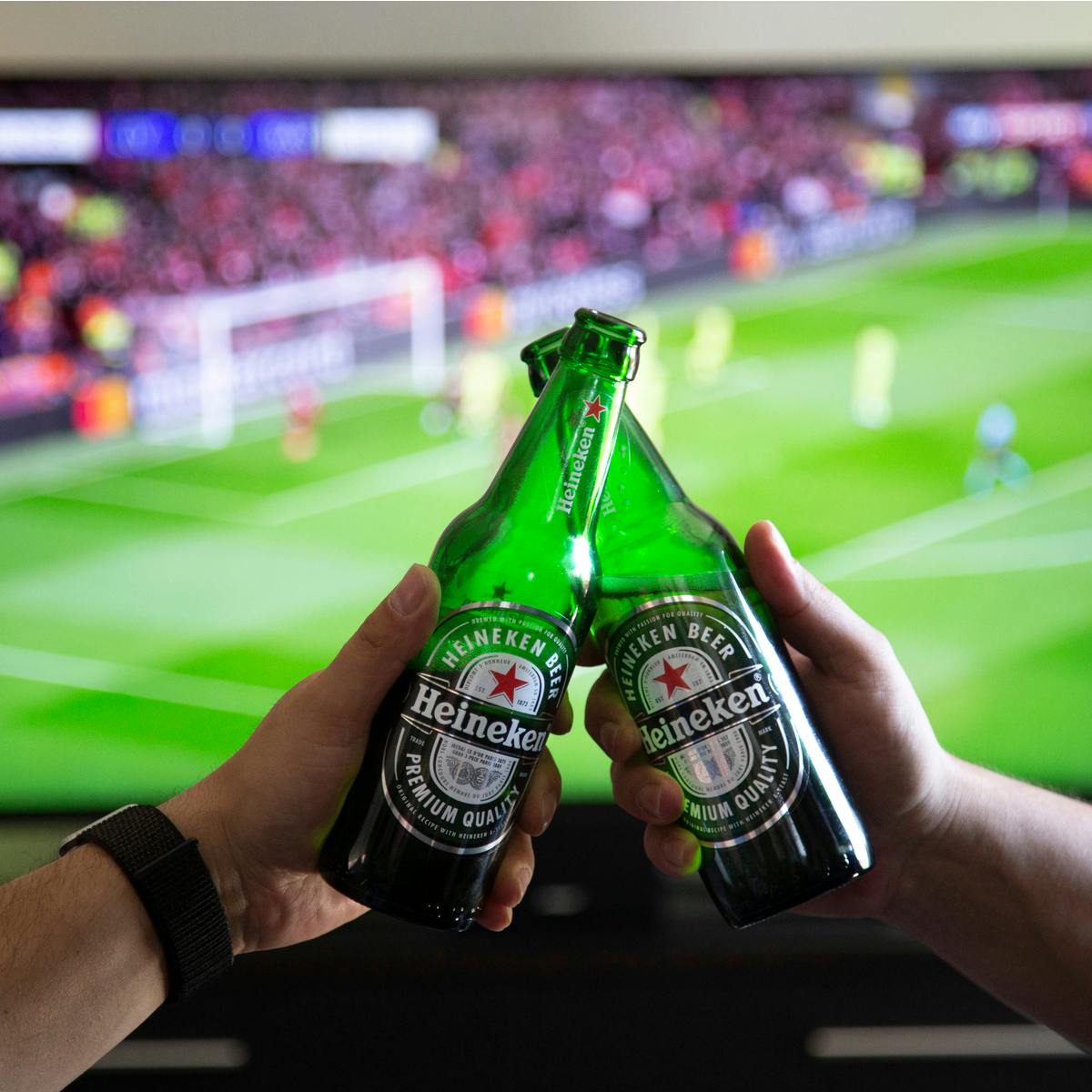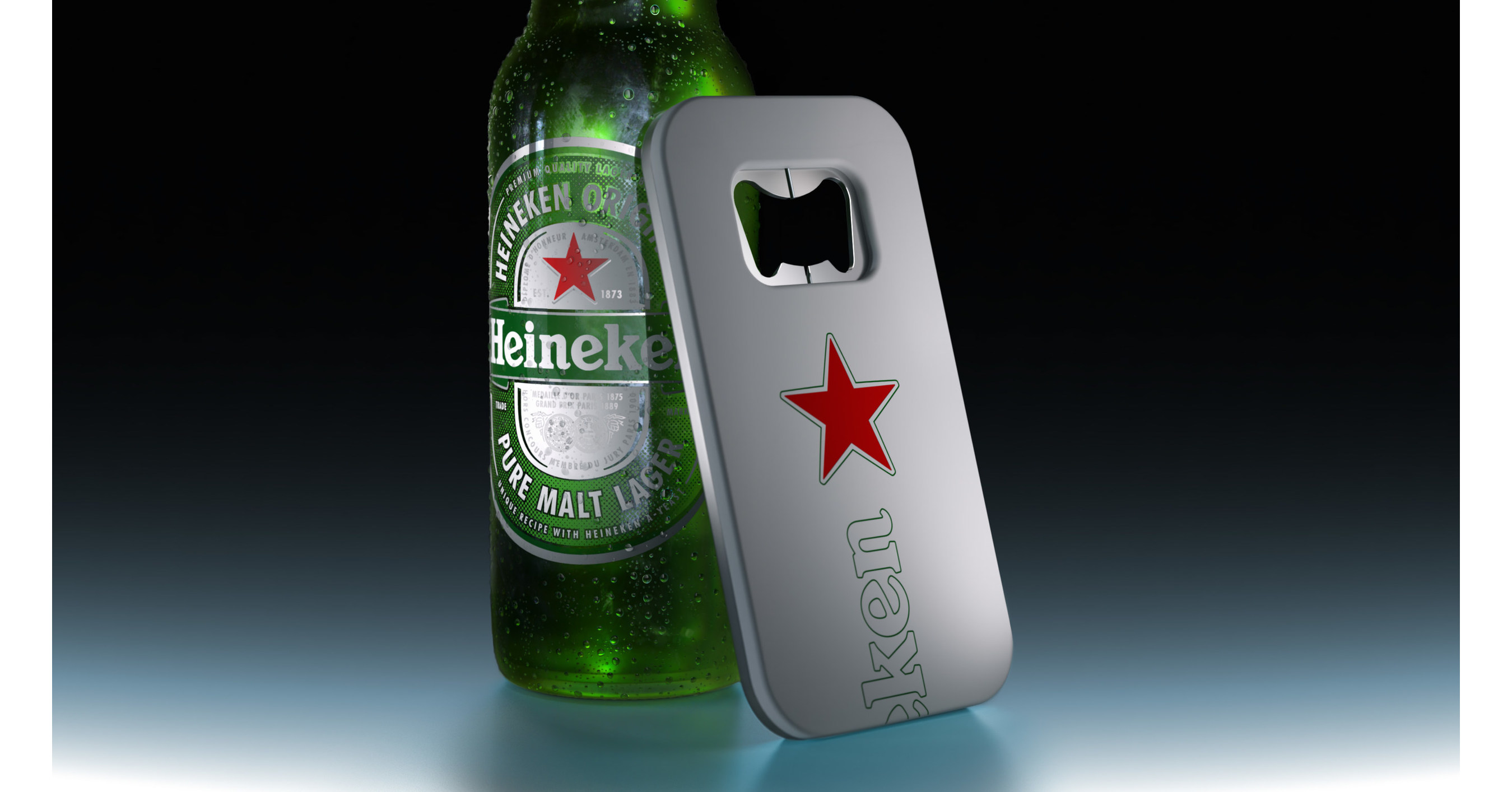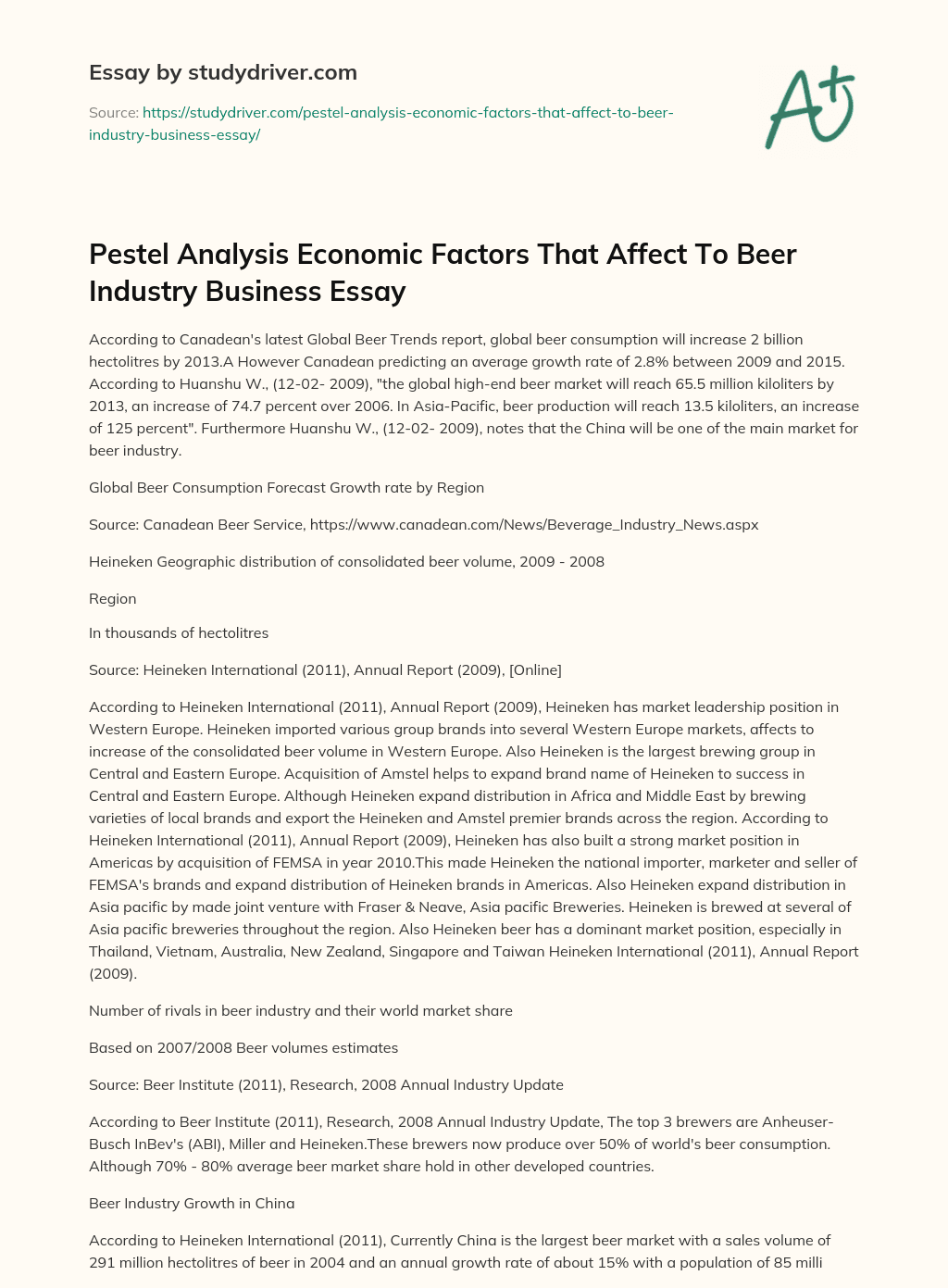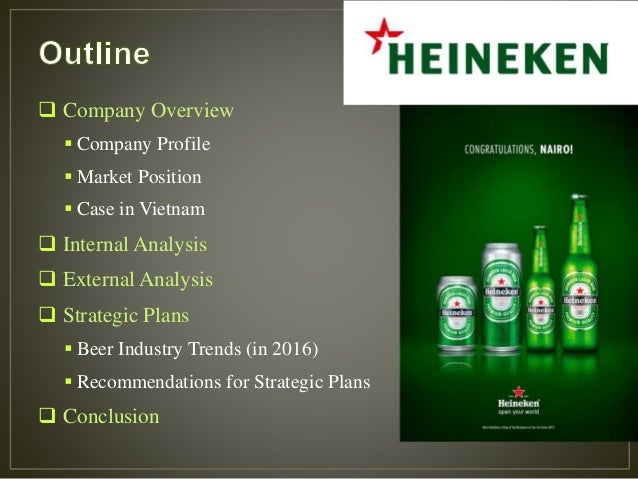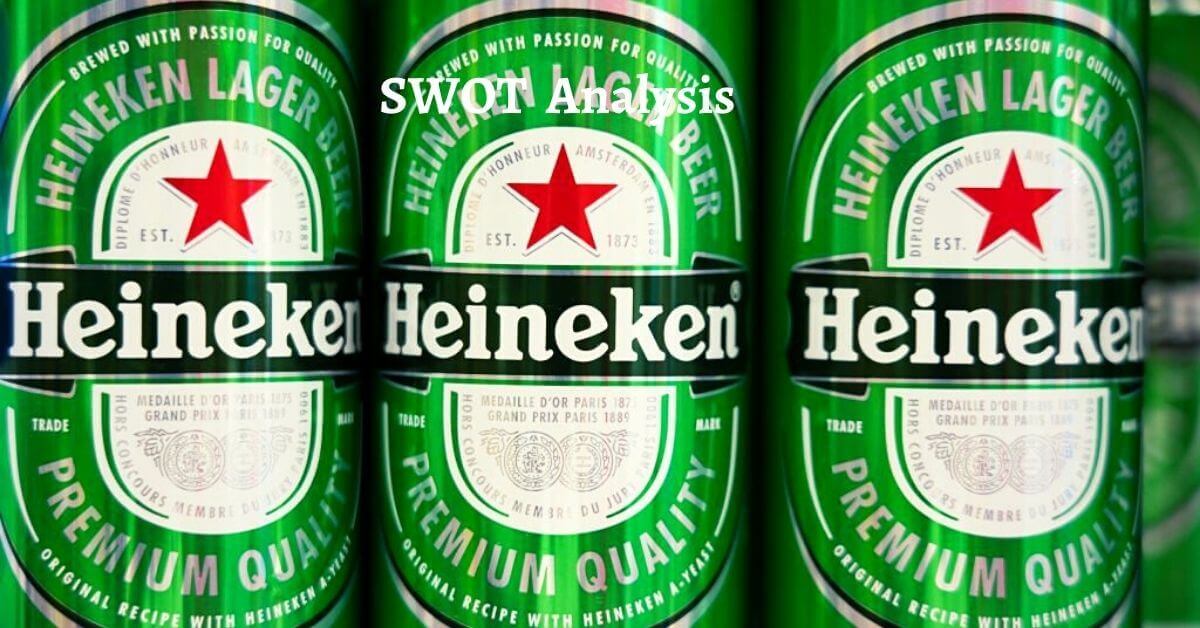Heineken is a Dutch multinational brewery and one of the world's largest beer producers. Founded in 1864, the company has a long history and a strong global presence, with operations in more than 70 countries and a portfolio of more than 300 brands. In this essay, we will conduct an industry analysis of the Heineken company and its position within the global beer market.
To begin, it is important to consider the overall size and scope of the global beer market. According to data from the World Health Organization, global beer consumption has been steadily increasing over the past few decades, reaching an estimated 187 billion liters in 2017. The global market for beer is highly competitive, with a large number of companies vying for market share. In terms of market share, the top five brewers – Anheuser-Busch InBev, Heineken, Carlsberg, China Resources Enterprise, and SABMiller – control around 50% of the global market.
Heineken is one of the leading players in the global beer market, with a strong presence in both developed and emerging markets. The company's global reach is supported by a diverse portfolio of brands, including its flagship Heineken brand, as well as other well-known brands such as Amstel, Birra Moretti, and Sol. In addition to its core beer business, Heineken also has a presence in the cider, soft drinks, and spirits markets through a number of acquisitions and partnerships.
One of the key strengths of the Heineken company is its strong distribution network and ability to reach customers in a wide range of markets. The company operates a number of breweries around the world, allowing it to produce and distribute its products locally. In addition, Heineken has a strong network of distributors and sales partners that help to bring its products to market. This strong distribution network has helped the company to achieve a global presence and reach a wide range of customers.
Another key strength of the Heineken company is its brand recognition and reputation. The Heineken brand is one of the most well-known and respected beer brands in the world, and the company has a strong reputation for quality and innovation. This strong brand recognition has helped the company to differentiate itself from competitors and build customer loyalty.
Despite its strengths, the Heineken company faces a number of challenges in the global beer market. One major challenge is the increasing competition from other global brewers, as well as from smaller, local brewers. In recent years, the global beer market has become more competitive, with a number of new entrants entering the market and offering alternative products. This increased competition has put pressure on the pricing of beer and has made it more difficult for companies to differentiate themselves from their competitors.
Another challenge facing the Heineken company is the changing consumer preferences and behaviors. In recent years, there has been a trend towards healthier lifestyles and a greater focus on wellness. This has led to a shift in consumer preferences towards healthier and lower-alcohol beverages, such as craft beer and hard seltzer. This trend has put pressure on traditional beer companies, including Heineken, to adapt and meet the changing needs of consumers.
Overall, the Heineken company is a strong player in the global beer market, with a diverse portfolio of brands, a strong distribution network, and a well-known and respected brand. However, the company faces challenges from increased competition and changing consumer preferences, and it will need to continue to adapt and innovate in order to maintain its position within the market.
